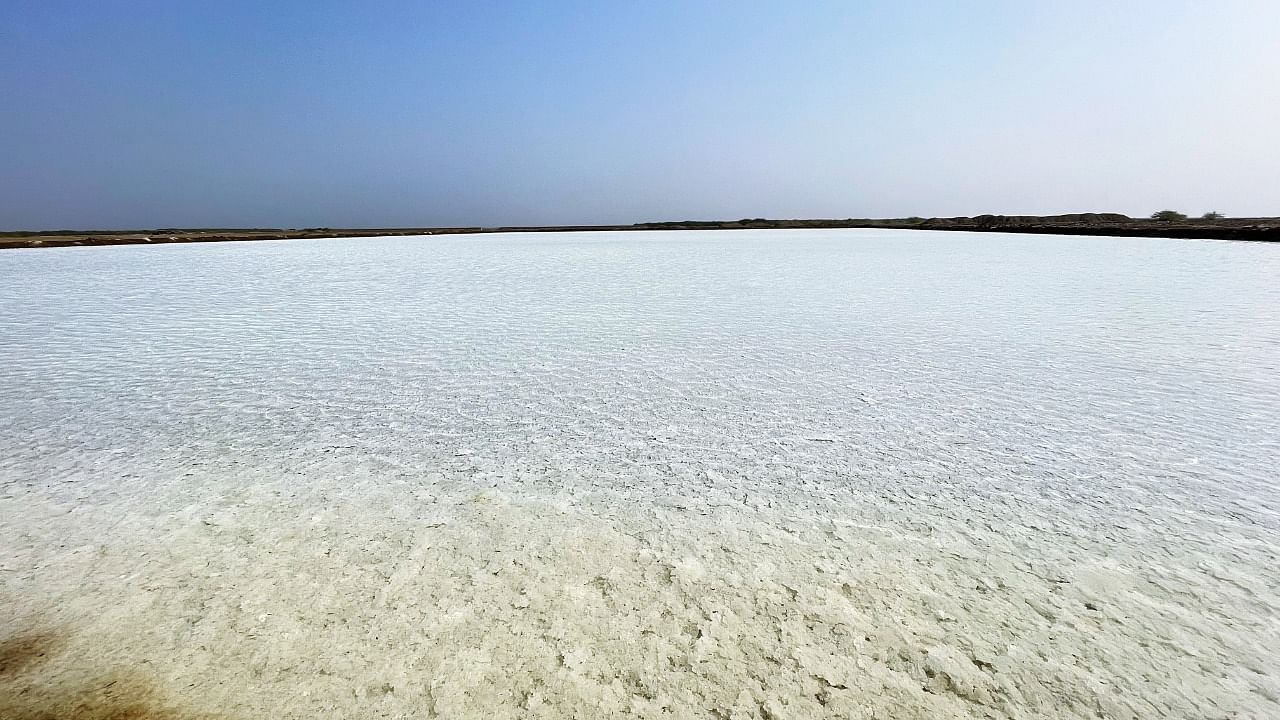
My rendezvous with Dasada in Gujarat's Surendranagar district marked the dawn of my excursion to the Rann of Kutch and Saurashtra.
Dasada, a former princely state on the fringe of the Little Rann of Kutch, two hours from Ahmedabad, is the only place in India where you can spot Asiatic wild asses. The blanched flatlands brush up against the ridges of the Western horizon and the sea beyond, while large colonies of breeding flamingos and Asiatic wild ass complete this vast salt desert.
Dotted with thorny scrubs and swamps, this is one of India's largest wildlife sanctuaries across 5000 sq km. While a trip typically commences with the common sighting of bustards, falcons, pelicans, flamingos, and storks in the winter, the area's tribal heritage and craft villages are a delight for those seeking an authentic rural Indian experience.
Wildlife safari and salt pans
The sanctuary has three entrance points: Aadeshwar, Bajana, and Jinjhwada. The park is home to fox, wolf, chinkara, hedgehog, jackal and 280 other types of animals. Besides the Khur ( wild ass), the blue bull and jackal can be spotted at the nearby Nawa Talao, Mithaghoda, and Kharaghoda lakes.
The Wild Ass Sanctuary is a rich haven for wildlife and nomadic cultures, making it an ideal location for curious tourists. As for me, the thrill of spotting wild-ass was augmented as the safari continued to the salt pans, where the Agariya tribe shared vital details on traditional salt harvesting techniques.
The Agariya tribe perseveres in the face of adversity to generate most of India's salt. They set up square fields and dig wells for the saline groundwater, and the salt fields turn silvery-white in the winter.
The Agariyas live in shacks beside their salt flats for six to seven months, braving desert temperatures from 40 degrees Celsius during the day to 4 degrees Celsius at night. Carrying the equipment over the flooded stretch is a huge accomplishment, as no car can handle the route after the rain. Workers haul everything by hand using corrugated sheets and pay a high price for working in such harsh conditions, as they seldom survive 60 years.
A nomadic way of life
If you stay longer in Dasada, you can also go to Mir village, a town of around fifteen families located about 2 kilometres from Dasada. Mirs are a nomadic community from Rajasthan that lives in makeshift homes. They are well-known for their dancing, but their speciality is beadwork. They make braids, tassels, and necklaces for ladies and girls out of opaque beads, out-of-circulation coins, bells, buttons, and mirrors. Visit Dasada's silk-weavers colony, the pastoral Vadiara and Kharapat Rabaris noted for their embroideries and the Bharward shepherds' settlement.
The Modera Sun temple, the carved temples of Munsar tank, the Harappan site at Dholavira, and the 12th-century Jain temple at Sankeshwar are some unique architectural treasures near Dasada.
(Veidehi Gite is the founder of KrazyButterfly and a former advertising professional who writes on travel, luxury, food, fashion, and fitness.)